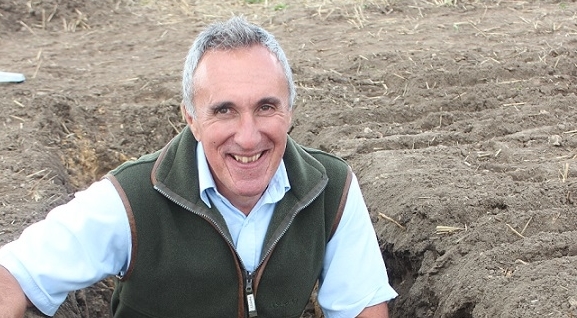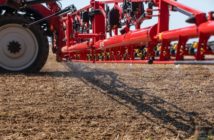Cultivation measures need to evolve in-line with the increasing move towards regenerative agricultural practices, according to independent soil and cultivations consultant Philip Wright.
And visitors to the Midlands Machinery Show will be able to benefit from his top tips on maintaining soil health, as well as advice to growers considering a switch to min-till, in a seminar entitled: ‘Soil damage prevention and cure – the pathway to regenerative agriculture’.
It is important to understand at the outset that some soils are better suited to min- or no-till practice than others, says Mr Wright. “Soils in the UK are often not naturally self-structuring and direct drill strategies can result in short- and medium-term yield losses – especially if their structure is compromised at the outset.”
For example, sands that are prone to slumping and non-calcareous high-clay soils with a high silt fraction, where fine particles can block water movement, need very careful management to maintain yields, he explains. “The aim for all soils is to build resilience using biological and root growing actions, and if needed, a tailored cultivation programme which aids structure while minimising damage.”
The first step is to know what the soil structure is like and the state of drainage – both natural and installed. Farmers should check outfalls and ditches for water movement and clear them if necessary. And they should dig pits to assess the soil structure and profile, says Mr Wright.
“Pits need not be deep – most about a spade depth, with some deeper through the subsoil – but enough holes should be dug to get an accurate picture across a field,” he explains. “This is where attention to detail is key because different areas like slopes, hollows, soil changes and wet areas may require different strategies.”
Where pits reveal blue, anaerobic patches or absence of roots, resulting from long-term cultivation pans, targeted cultivations could be used to break them up. This targeted approach should be developed into a longer-term strategy, gradually building soil resilience using biology and by exploiting plant roots as effective cultivators.
Fields should never be left bare, he warns. “Whether it is a cover crop or volunteers and stubble through the winter, the action of roots will improve drainage and structure.”
As the strategy unfolds Mr Wright recommends introducing min-till in a stepped approach. For example, strip tillage could be used in areas needing structural improvement, allowing less intrusive direct drilling to follow once structure has improved. As the soil improves and root depths increase, cultivations can be further tweaked (less being more in many cases) to maintain soil structure and health.
Central to this is minimising compaction, which can reduce yield losses on trafficked areas by 10% or more. As well as low levels of natural resilience, compaction is caused by fieldwork in bad weather, high axle loads and tyre pressures. A controlled traffic approach is therefore needed to combat these factors, along with reduced axle loadings and reduced tyre pressures.
Reduced field pressures could be combined with half-loads of seed to reduce axle weights when soils are prone to damage, adds Mr Wright. “With ultra-low tyre pressures, dropping by as little as 0.1-0.2 bar will also reduce compaction, but it is important to consult the manufacturer to check these pressures are safe.” Most manufacturers will visit and use weigh cells to check the balance and axle loads of equipment.
Ultimately, using tailored advice and an optimised combination of roots and cultivation to improve structure will reduce remedial tillage and lead to sustainable improvements in structure, says Mr Wright.
Visitors to the show will also be able to see a wide variety of minimum tillage equipment and low ground pressure options from a broad range of exhibitors, says show manager Elizabeth Halsall. “Through a combination of practical advice in the seminar programme and innovative kit on the ground, visitors will be able to take home the knowledge and the tools to make genuinely beneficial changes to their soil health and productivity.”
- The Midlands Machinery Show takes place on 9-10 November at Newark Showground. Entry is free but advanced registration is essential. For more information or to book tickets visit midlandsmachineryshow.com.




